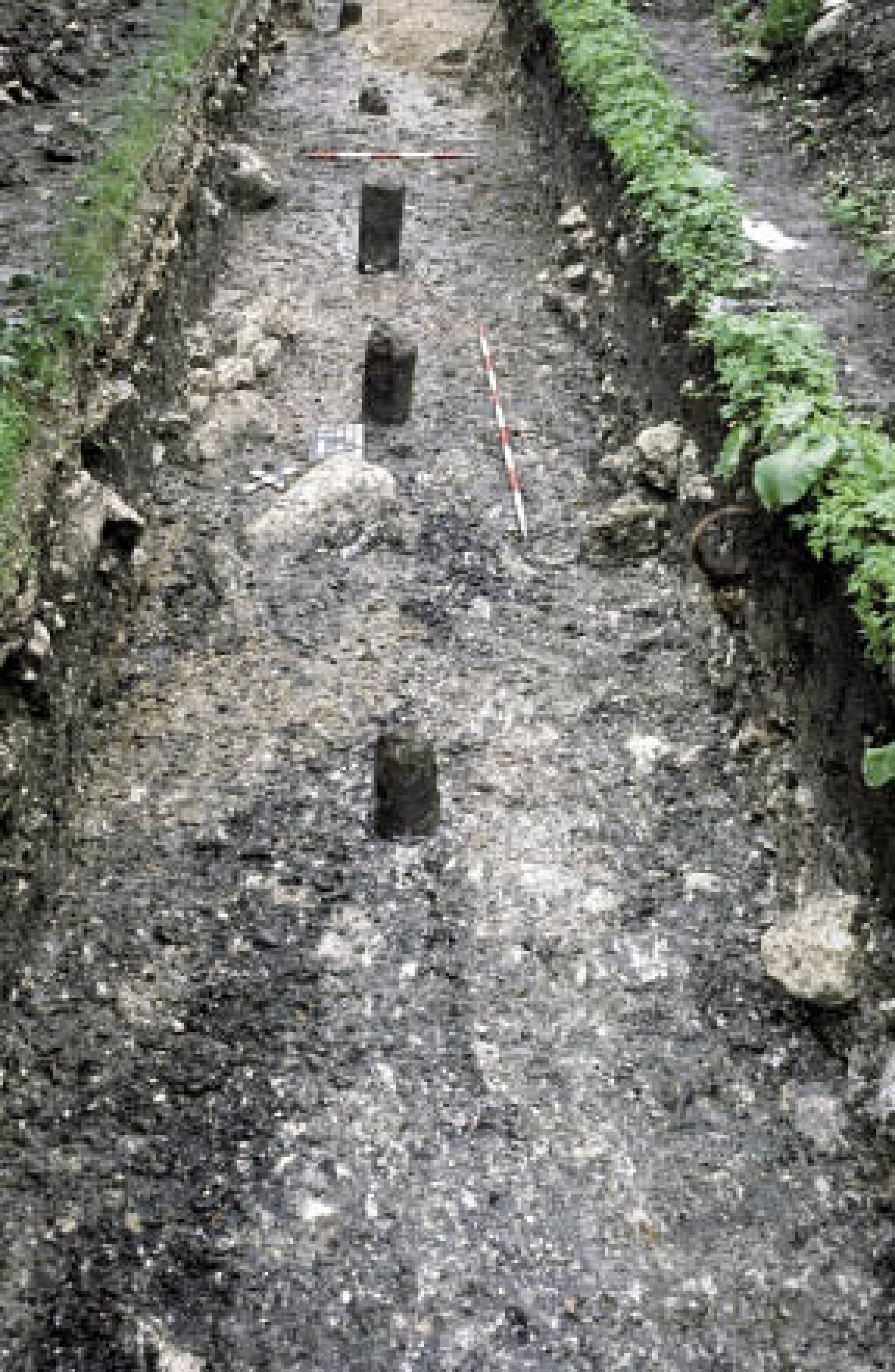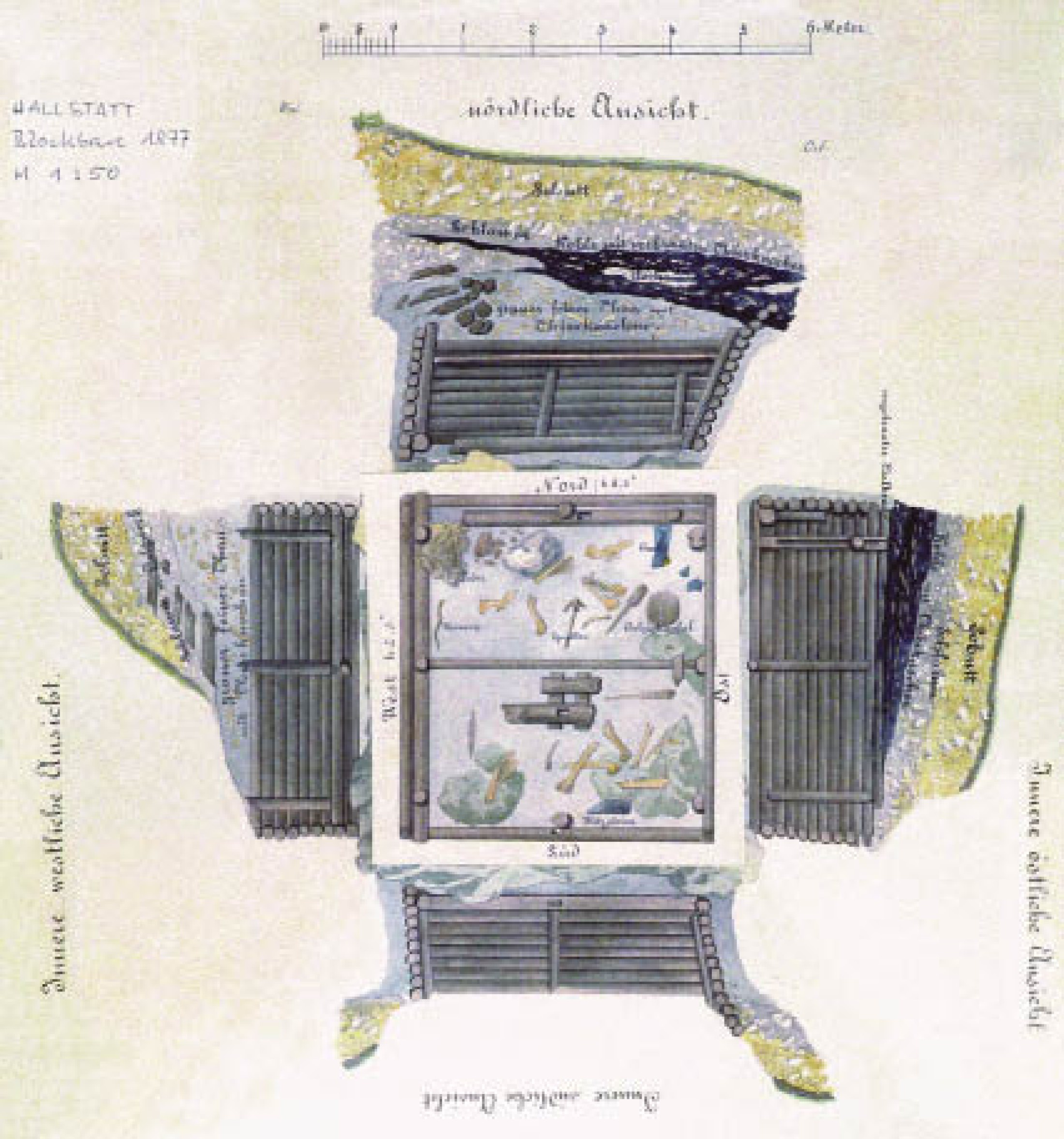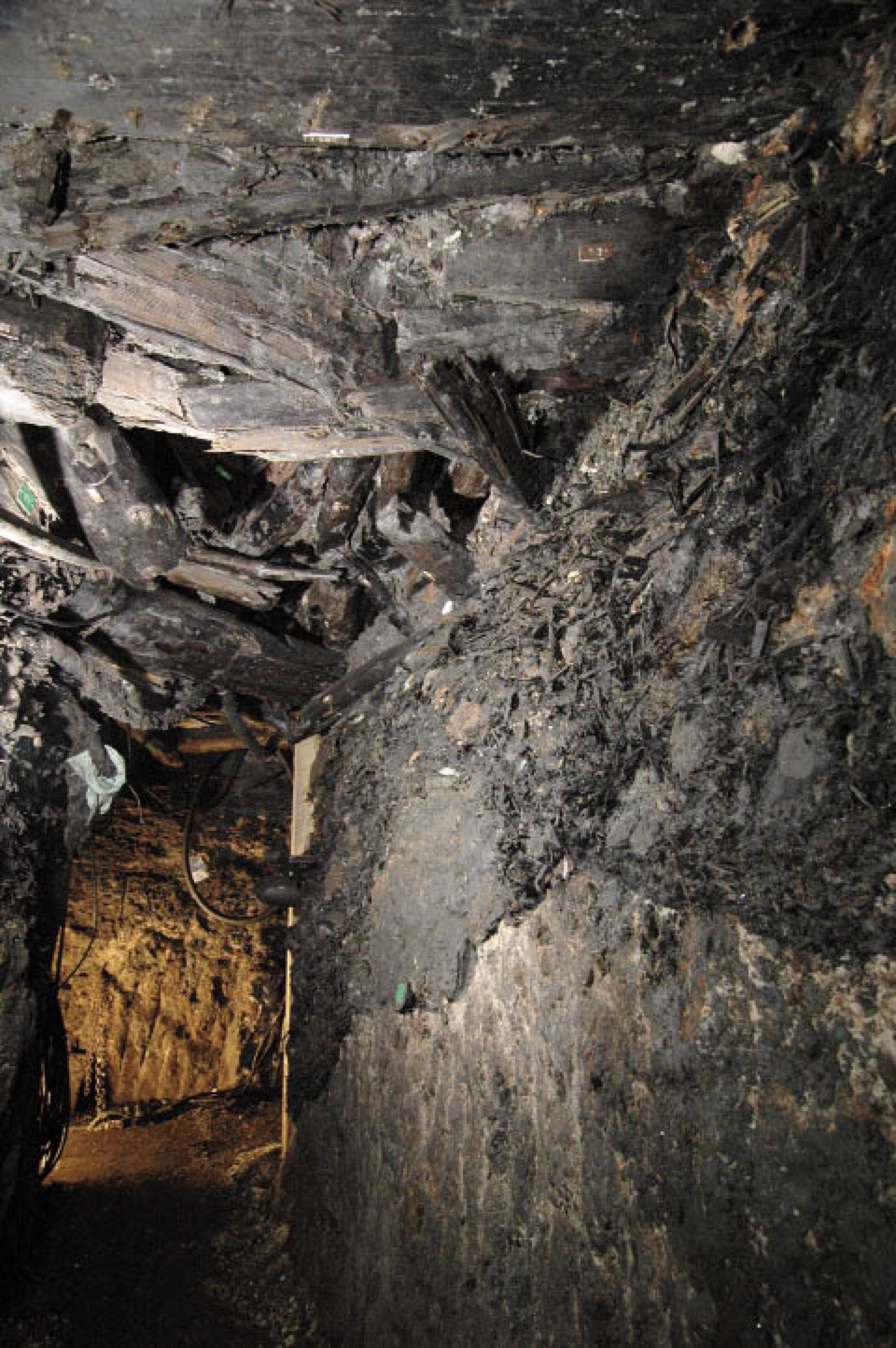Hallstatt during the Bronze Age
Most of the archaeological finds from the Bronze Age (which lasted from around 2100 until 800 BC in the Salzkammergut region) come from prehistoric mining or the well-organized meat processing industry above ground. Until now, no settlement or burial site dating to this period has been found. While maintenance of the mining facilities would have required a settlement on site, it is also possible that there were further settlements nearby.General information on the Bronze Age
The Bronze Age in Hallstatt
General information on the Bronze Age
With the Bronze Age, starting some 4000 years ago, a new era began. A new material, bronze, and a new technology, metallurgy, revolutionized society. The era is marked by an emerging division of labour, extensive commerce and clear social hierarchy. One might say that this was the beginning of European industrialisation. It was also the beginning of large-scale mining in the Alps.The Bronze Age in Hallstatt
Where did the Hallstatt Bronze Age miners live? We have no answer: we know neither the settlements nor the graves of these people. We know nothing of the social structure of the Bronze Age mining community: we cannot tell whether the people who worked in the mine were free men or slaves; we know nothing about property and power relations. Did a small elite control the fate of the mine and cream off the undoubtedly considerable profit, or did they live in egalitarian conditions? Archaeologists normally turn to the graves and settlements of prehistoric peoples to answer such questions; they compare the quantity and quality of grave goods, the level of luxury of the tombs, or they analyse the size and form of particular funerary structures as well as the distribution of finds within particular settlements. This cannot be done for the Bronze Age mining community, since neither dwellings nor graves dating to this period have been discovered in the Hallstatt High Valley.The nearest known contemporaneous settlements and cemeteries are many kilometres away. Did the Bronze Age miners perhaps not live by the salt mine, but somewhere down in the valley by the lake? Did they come up to the High Valley only to work? Archaeologists studying Bronze Age mining tend to believe that a ‘normal’ village population that is, children and old people, men and women – lived in the High Valley, close to the galleries, throughout the year. This hypothesis is based on the following assumptions: the mine’s large scale and the geological conditions (with heavy, water bearing surface layers) require 24-hour maintenance, which means that at least a small group of miners must have been permanently resident. Aboveground construction work carried out in the past few years has repeatedly yielded Late Bronze Age settlement pottery. But the most persuasive evidence comes from a different line of evidence recently uncovered up in the area around the mine shafts.
Archaeologists have discovered salt-curing equipment intended for processing huge quantities of meat, again suggesting that miners were settled near the Bronze Age mine. Remains of the settlement and its associated cemetery would, however, be difficult to find, since the valley was repeatedly buried by mud slides in prehistoric times. What used to be the surface in the Bronze Age now lies under several metres of debris.
(Reschreiter, H. – Kowarik, K. – Loew, C.)




